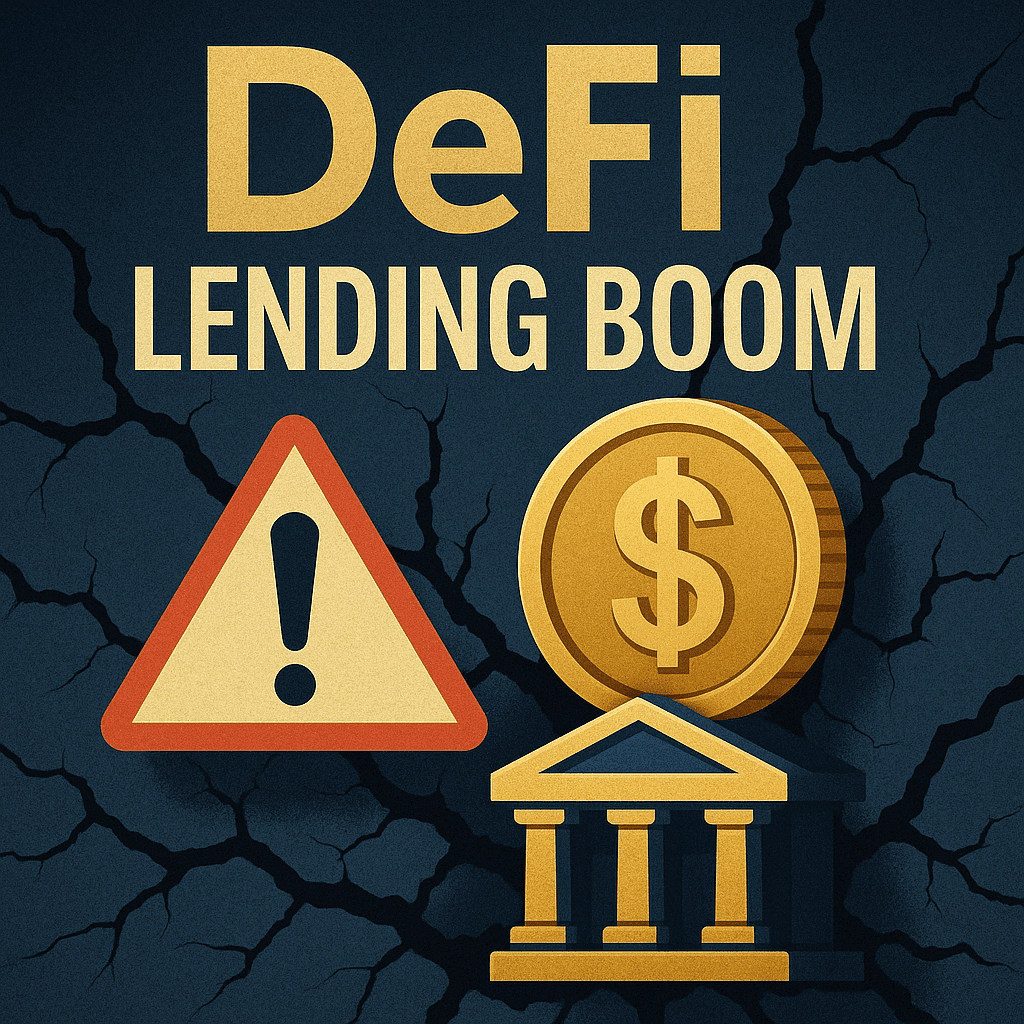Beneath the dazzling growth, quiet tremors are beginning to build.
The expansion of decentralized finance (DeFi) lending protocols has been nothing short of spectacular. Yet this very growth may be exposing the fragile foundations on which the sector stands. Hidden beneath the smoke of success are three structural vulnerabilities: unseen fractures, chaotic concentration, and regulatory voids.
If these fault lines converge, they could trigger what I call “the silent collapse.”
- The Regulatory Net Tightens — Lending Protocols Are Running Out of Room
The Financial Stability Board (FSB) recently issued a stark warning: “There are significant gaps in global crypto regulation.”
Cross-border digital assets can easily slip through jurisdictional cracks, migrating to lightly regulated regions—the so-called “regulatory-arbitrage havens.”
For DeFi lending platforms, this shifting landscape could prove existential:
- Licensing and registration requirements are expanding globally, forcing unprepared protocols to scale back or withdraw entirely.
- Jurisdictional uncertainty is emerging as a key risk factor for capital flows and liquidity provision, threatening the very model of globalized DeFi liquidity.
- As national oversight tightens, protocols face growing scrutiny over transparency, auditability, and governance—weak players may not survive the next wave of enforcement.
- Business models built on regulatory arbitrage may find the “escape routes” closing as international coordination strengthens.
In short, lending protocols now stand on the front line of systemic regulatory risk—the hidden fault beneath this booming market.
- Concentration of Power and Capital — The Myth of Decentralization
While DeFi lending protocols advertise themselves as decentralized, the data tells another story:
governance power and liquidity are increasingly concentrated in the hands of a few whales.
- Decision-making power is skewed toward a handful of major token holders, allowing minority interests to dictate protocol direction.
- A small group of large liquidity providers can trigger cascading effects if they withdraw capital, leading to a “liquidity cliff.”
- Apparent diversification in pool size and yield is often an illusion—behind it lies an overreliance on a few dominant sources of capital.
This “illusion of decentralization” mirrors the concentration risk long recognized in traditional finance.
Ironically, technological sophistication and market enthusiasm may be masking the same structural weaknesses DeFi sought to escape.
- The Limits of Code — Technology Alone Cannot Erase Design Flaws
The notion that “smart contracts guarantee safety” has proven overly optimistic.
DeFi’s automated systems remain vulnerable to flaws both technical and human:
- Oracle delays, faulty data, or unreliable feeds can misfire liquidation chains—a single glitch can cascade into billions in losses.
- Shared liquidity infrastructure and reference feeds across protocols create dangerous single points of failure.
- Despite claims of decentralization, operational, liquidity, and oracle dependencies still reveal centralized choke points—the so-called “decentralization trap.”
Innovation alone cannot eliminate design risk.
Instead, flawed architecture, lax governance, and dependency chains are emerging as the true precursors to collapse.
- The Psychology of Trust — The Invisible Foundation
DeFi brands itself as trustless, yet in practice, the entire system relies on invisible trust chains: integrity of operators, code audits, and community reputation.
Whale movements, influencer statements, or minor reward adjustments can all shift liquidity sentiment in seconds.
When confidence cracks, even the most sophisticated mechanisms can’t prevent the digital equivalent of a bank run.
Without institutional credibility, sound engineering, and transparency, the system may simply be a jet flying with broken wings.
- Legal Ambiguity — The Vacuum of Accountability
Most lending protocols operate in legal gray zones where responsibility is undefined.
When hacks, liquidation errors, or operational failures occur, user protection and restitution are often nonexistent—making DeFi, in effect, a lawless frontier of finance.
As regulation tightens, protocols face a paradox:
to survive, they must either centralize or cease operation.
To remain decentralized, they must operate beyond legal boundaries—an inherently fragile balance.
The result: a sector that is “growing but unprotected.”
- Contagion Risk — The Shadow Network Expands
The risk is not isolated.
Projects connected to major lending protocols share similar weaknesses: unstable designs, shared dependencies, and regulatory exposure.
A governance failure, liquidity freeze, or oracle malfunction in one protocol can ripple across the ecosystem, creating a chain reaction.
By the time investors realize the contagion, liquidity may already have vanished—and the exits may be sealed.
- The Macro Collision — Growth Meets Headwind
These internal vulnerabilities are magnified by global headwinds:
- The FSB’s warnings highlight how crypto’s explosive growth has outpaced institutional oversight.
- Licensing mandates, exchange audits, and crypto-ATM restrictions are becoming reality across multiple jurisdictions.
- Inflation, rising interest rates, and recession fears—compounded by geopolitical tensions—are testing the sector’s resilience and liquidity tolerance.
Conclusion — From “Caution” to “Alert”
DeFi lending has reached a critical crossroads of maturity.
Its growth remains dazzling, but beneath the surface lie the quiet erosions of concentration, dependency, regulatory exposure, and design fragility.
Entering this sector now demands more than optimism—it requires clear-eyed skepticism.
The questions investors should be asking are not “How fast can it grow?” but rather:
- What could break?
- Who truly supports this system?
- Where does institutional protection begin—and end?
Traditional finance has already taught this lesson: behind every high yield lies a hidden risk.
Now is the time to remember that truth,and to approach DeFi not with euphoria, but with vigilance.
In the end, survival in this market belongs to those who can stay cool when the code begins to crack.



































